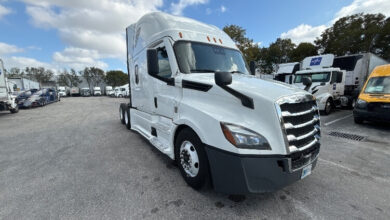The Impact of Storm-Related Car Accidents: Facts And Safety Tips

Car accidents are growing increasingly common across the United States. In fact, research shows that they surged by more than 30 percent from 2013 to 2022. Though some reports show a slight decline over the last few years, the number of accidents is still far higher now than in the past. Several factors are contributing to this uptick in car crashes, including increased driver distractions and higher volumes of traffic.
Of course, some factors are beyond our control. That’s certainly the case with the weather. It has been known to increase the risks of car accidents for several reasons. Read on to learn more about potential storm-related accident impacts and how to avoid them.
How Weather Affects Driving
An estimated six million car accidents take place in America each year. Weather is a contributing factor, whether directly or indirectly, in at least 20 percent of them. Different types of weather can have varying impacts on driving and road safety. For example, fog may not affect the roads very much, but it can certainly interfere with visibility. Headlights can make other vehicles more visible in fog, but they’ve also been known to do more harm than good when it comes to seeing through it.
Rain is also a common culprit in accidents. Wet roads are naturally more slippery than dry ones. Heavy rain greatly detracts from visibility. It can also increase the risk of hydroplaning, and many people either panic or don’t know how to respond when their vehicles’ tires lose contact with the road. At the same time, when vehicles’ brakes get wet, they may not respond as quickly and effectively as they do in dry weather.
Furthermore, winter weather is a major factor in many accidents. Snow and ice make roads slick, which increases the likelihood of sliding. Snow detracts from drivers’ visibility too. Particularly strong winds can cause crashes as well by pushing vehicles and causing drivers to lose control. Even clear, beautiful weather has its disadvantages. After all, having the sun glaring in your eyes can make the road and other vehicles temporarily disappear.
Reducing Weather-Related Accidents
All types of weather can contribute to car accidents, and no one has the power to control the conditions they’re up against when they’re driving. Still, it’s certainly possible to manage the risks and help reduce the number of weather-related accidents. Simply exercising due caution when driving in snow and ice can go a long way toward preventing crashes during the winter months. Being sure your tires and brakes are in good condition is also essential.
No matter what type of weather you’re up against, reducing your speed when conditions are unfavorable will also help keep you and other drivers safe. Slowing down when you’re driving in rain, snow, ice, fog, and other hazards will give you more time to react when something goes wrong. It’ll also reduce the effects of some of the dangers you might encounter in bad weather, such as hydroplaning or sliding on black ice. Being sure you understand how to react to those problems will make a world of difference as well.
Dealing With Weather-Related Accidents
Being a cautious driver and keeping up with vehicle maintenance can go a long way toward reducing your risks when driving in bad weather. Of course, it won’t completely eliminate all the dangers you might find yourself up against. No one can be completely prepared for every eventuality, and you have no way of controlling other drivers on the road.
When inclement weather comes into play, it can make proving who was at fault in an accident and to what extent particularly difficult. It can even give careless drivers a way to avoid the consequences of their actions. If you’re in an accident in which the weather was a contributing factor, having an attorney in your corner will improve your chances of ensuring justice is served and getting the compensation you’re entitled to.




